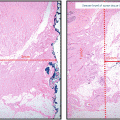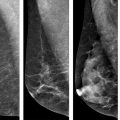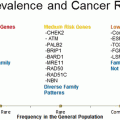© Springer Science+Business Media New York 2015
Lisa A. Newman and Jessica M. Bensenhaver (eds.)Ductal Carcinoma In Situ and Microinvasive/Borderline Breast Cancer10.1007/978-1-4939-2035-8_1616. Introduction, Evolution, and Application of the Van Nuys Prognostic Index in DCIS
(1)
Division of Surgical Oncology, Department of Surgery, UT Southwestern Medical Center, 5323 Harry Hines Blvd., 75390-8548 Dallas, TX, USA
Keywords
DCISVan NuysDuctal carcinoma in situIntroduction
As discussed very eloquently in other portions of this work, while ductal carcinoma in situ (DCIS) by definition is noninvasive disease, most patients are informed that they have been diagnosed with breast cancer and are given several options, if feasible, for treatment. In general, patients with DCIS are offered breast-conserving treatment (lumpectomy with radiation) versus mastectomy. Given the varying presentations of DCIS as well as the broad biologic spectrum of disease, many investigators have, over time, sought to identify subgroups of patients who could potentially have surgical resection alone as the definitive means of treatment, thus sparing the patient from radiation and its associated risks.
Over time, risk assessment models have been developed in many areas of Breast Oncology with the goal of guiding treatment efforts to offer the greatest benefit with the least risk of recurrence and least morbidity. With regard to guidelines for the treatment of DCIS, Melvin Silverstein, M.D., has been very instrumental in raising the question of potential overtreatment in certain cases of DCIS—particularly those on the least aggressive end of the wide biologic spectrum.
Under the influence of Dr. Silverstein, The University of Southern California/Van Nuys Prognostic Index (USC/VNPI) was created in 1996 and subsequently revised as a means of stratifying DCIS cases based on independent predictors of local recurrence [1]. The original model used tumor size, margin width, and pathologic classification (nuclear grade and presence or absence of comedonecrosis) to create a tool to identify patients that could possibly avoid radiation after breast-conserving surgery versus those with high-risk factors for local recurrence for which more aggressive therapy was recommended. The goal of this prognostic index was to provide a reproducible and objective model that could be used to standardize the treatment decision-making process and avoid confusion among patients and clinicians. For each tumor characteristic, a numerical score was assigned ranging from 1 to 3. For each individual case of DCIS, the sum of the scores for each tumor characteristic was then added to provide the overall VNPI score ranging from 3 to 9.
VNPI = pathological classification score + margin score + size score [1]
In the initial series, they retrospectively evaluated 333 patients with pure DCIS without evidence of an invasive component. They compared the patients who underwent excision alone (195) versus those who underwent excision plus radiation (138) with respect to local recurrence rates at 8 years. According to their results, there was no statistical difference in the local recurrence rates of patients with the lowest VNPI scores, regardless of whether or not radiation therapy was used (100 % vs. 97 %; p = not significant), suggesting that this particular group of patients could potentially be treated with excision alone [1].
On the contrary, among the patients with higher VNPl scores of 5, 6, or 7 a statistically significant 17 % reduction in the risk of local recurrence was noted when radiation therapy was added after resection (85 % vs. 68 %; p = 0.017). An interesting finding was noted among patients with the highest VNPI scores of 8 or 9. In this particular group, there was also a statistically significant difference in local recurrence between the excision alone and the excision plus radiation groups (p = 0.026). However, the overall local recurrence rates in all of the cases with VNPI scores of 8 or 9 were greater than 60 % at 8 years, leading the investigators to suggest consideration for mastectomy as definitive treatment in these cases [1].
While this initial attempt at using known prognostic factors for DCIS to create a uniform approach to treatment decision making among a very heterogeneous group of lesions seems very feasible, even the authors admitted that this tool should be viewed as an “adjunct” and not a substitute for sound clinical judgment by the clinician and informed patient consent [1]. At the time of publication in 1996, no known series had purported a mortality benefit of one therapy versus another, but there were several addressing local recurrence differences between different treatment modalities. The development of the VNPI was the first and most widely cited effort to address the local recurrence rates among particular subsets of DCIS patients with similar biologic activity.
Modifications
By 2003, the dataset was updated to include age as an independent predictor of recurrence [2]. Since the original introduction of the VNPI in 1996, several independent authors, including F. Vicini and colleagues at William Beaumont Hospital in Michigan, identified age as an independent predictor of local recurrence [3–5]. Silverstein and colleagues from The University of Southern California decided to revisit their data to include this new prognostic predictor. At this point, just over 700 cases of DCIS treated with breast conservation were reviewed in a retrospective fashion [2]. As a result, a new formula was introduced:
USC/VNPI = pathological classification score + margin score + size score + age score [2]
Similar to their efforts in 1996, cases were scored based on their independent tumor characteristics [2].
A score, ranging from 1 for lesions with the best prognosis to 3 for lesions with the worst prognosis, was given for each of the three prognostic predictors. [2]
Size score:
1: ≤ 15 mm
2: 16–40 mm
3: ≥ 41 mm
Margin score:
1: ≥ 10 mm
2: 1–9 mm
3: 1 mm (involved or close margins)
Pathologic classification score:
1: (non-high-grade lesion without comedo-type necrosis)
2: (non-high-grade lesion with comedo-type necrosis)
3:(all high-grade lesions)
Age score:
1: ≥ 61
2: 40–60
3: ≤ 39
Of the 706 patients with pure DCIS without evidence of invasion, three groups were devised once the modified USC/VNPI model was applied: scores of 4, 5, or 6; scores of 7, 8, or 9; and patients with scores of 10, 11, or 12.
The statistical findings with regard to local recurrence rates with and without radiation were similar to those first published in 1996. Now with 12 years of analyzable data, they calculated recurrence risks for the different score groups. There was no statistically significant difference in local recurrence rates in patients with low scores (4–6) with or without radiation after excision. Patients with intermediate scores of 7–9 experienced a 12–15 % reduction in local recurrence risk with the addition of radiation therapy (p = 0.03). As predicted by the original model, patients with the highest scores experienced recurrence rates approaching 50 % regardless of whether or not radiation was included in their treatment plan. The greatest benefit from radiation, however, was seen in the highest score group, but the recurrence rate in this group remained high despite the addition of radiation prompting a recommendation to consider mastectomy.
These results using the modified index produced similar recommendations from the authors:
Consider excision alone for patients with scores of 4, 5, or 6.
Consider excision with radiation for patients with scores of 7, 8, or 9.
Consider mastectomy for patients with scores of 10, 11, or 12.
The publication of the updated results was released in 2003 and served as additional evidence of the utility of this model in clinical practice as the model produced similar findings several years later. However, the authors openly admitted that randomized, prospective validation studies would be necessary to confirm their findings and prove that the model could be safely adapted in a global fashion.
Validation
In response to the above-referenced efforts of Silverstein and colleagues, other institutions have attempted to validate these results with varying results [6–10]. Despite the lack of universal reproducibility, it has remained popular as an adjunct tool in decision making given its ease of use.
One recent attempt to validate the USC/VNPI was published by Lee et al. in 2013. A retrospective review of 294 patients with pure DCIS who underwent breast conservation between 1990 and 2009 was conducted. Patients with invasive cancer and those who underwent mastectomy were excluded. Fifty-seven percent of the patients studied had low risk scores of 4–6, 40 % had intermediate risk scores 7–9, and 3 % had high risk scores of 10–12. Overall, radiation therapy did not reduce the risk for local recurrence. The average time to recurrence was 38 ± 24 months in the group receiving radiation therapy and 37 ± 19 months in the group that did not receive radiation (p = 0.691). The recurrence rates of the group receiving radiation therapy and the group not receiving radiation therapy were similar regardless of VNPI score (5.7 % vs. 5.8 %, P = .969)
Stay updated, free articles. Join our Telegram channel

Full access? Get Clinical Tree







